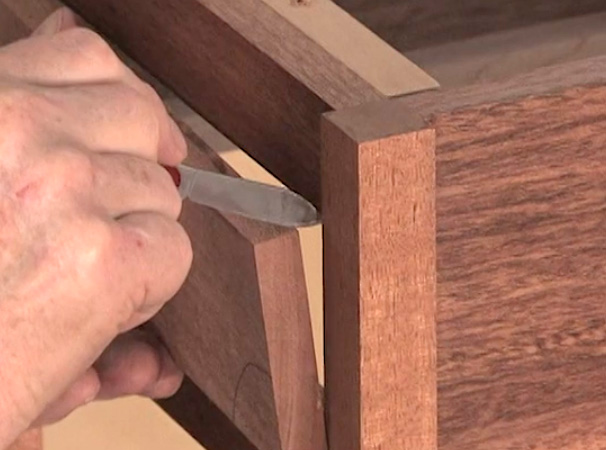
I just completed a stackable wall-mounted unit for storing my router, with two removable units that stack on the main compartment. These two units have pull-out drawers, which were put together with dovetail corners. I thought I had measured every piece correctly, including the sides of the drawers, which determine the length. After glue-up and sealing with polyurethane, I discovered that the drawers were 1/4-inch too long, which leads to my question, “Is there a rule of thumb set of measurements for creating drawers to insure proper clearance?” These drawers were made of 3/4-inch cabinet grade plywood on all sides. I used the 3/8 blind, one pass setup on the dovetail jig. – Dewey Lackey
Tim Inman: My rule of thumb has two parts:
1. Measure twice, cut once.
2. Always make a sample piece to test the fit where important clearances are needed. Maybe my rule should have three parts.
The third would be ‘Never trust a ruler or an accountant!’ Now you’re a more experienced craftsperson. Get back on that horse and ride it again. You’ll do better the next time. Don’t give up!
Chris Marshall: Oh, those painful mistakes. We all make them … seriously. Sounds as though your drawer sides fit the front-to-back space, but that “blind” drawer front didn’t get taken into account. There’s the extra 1/4 in. that caught you unawares. Tim is right here — mistakes make you a better woodworker in the long run. A perfect project is every good woodworker’s goal, but it’s a tough benchmark to hit every time. Still, we keep trying. I’ve actually found it incredibly helpful to learn CAD and create a careful set of plans for every project I make. You’ll know if something fits or if it doesn’t before you commit a single piece of wood to the project. Then, I build my material list directly off of the computer drawings. It works wonders and prevents more of those “shoulda, coulda, woulda” mistakes from happening.





